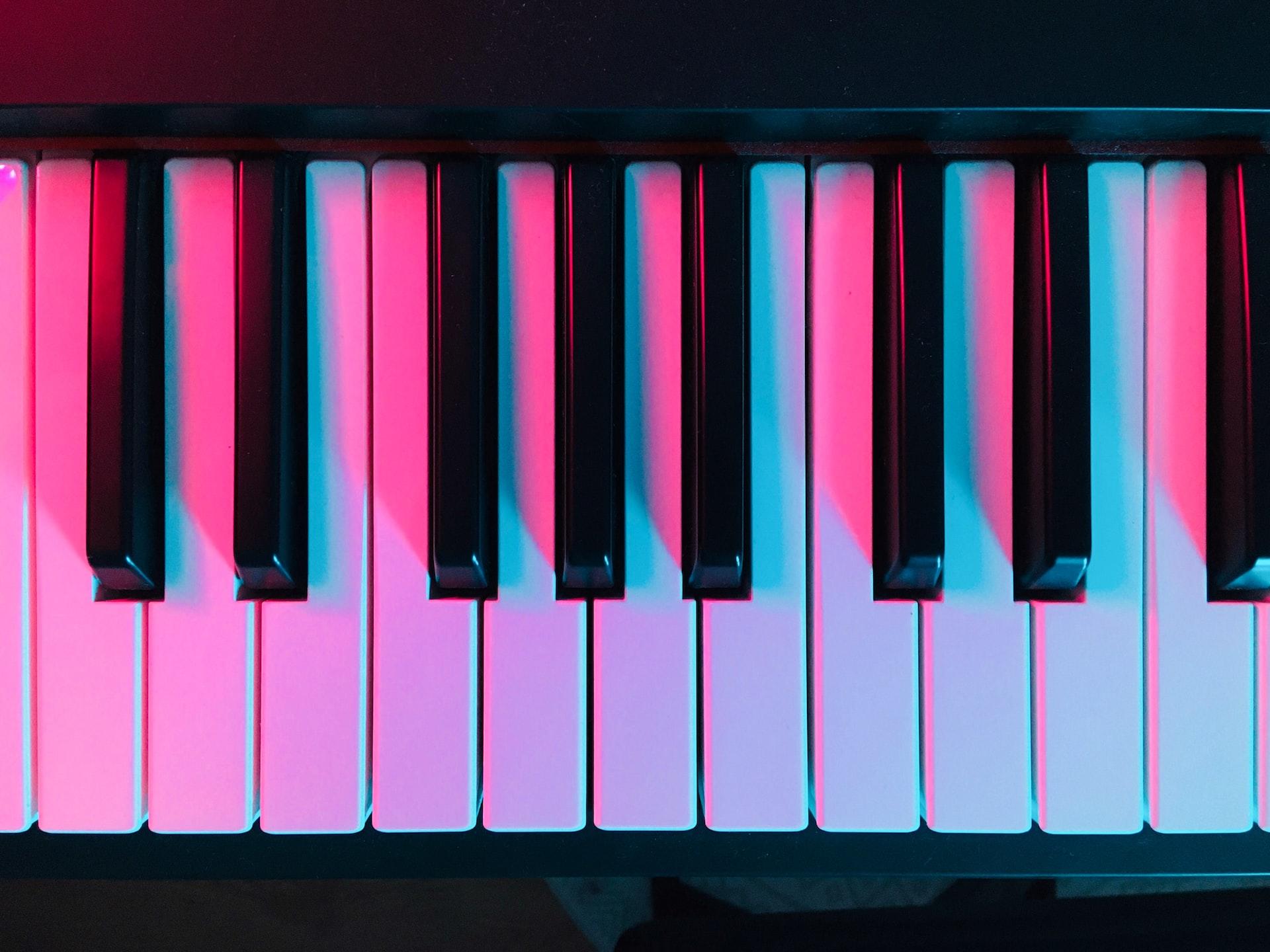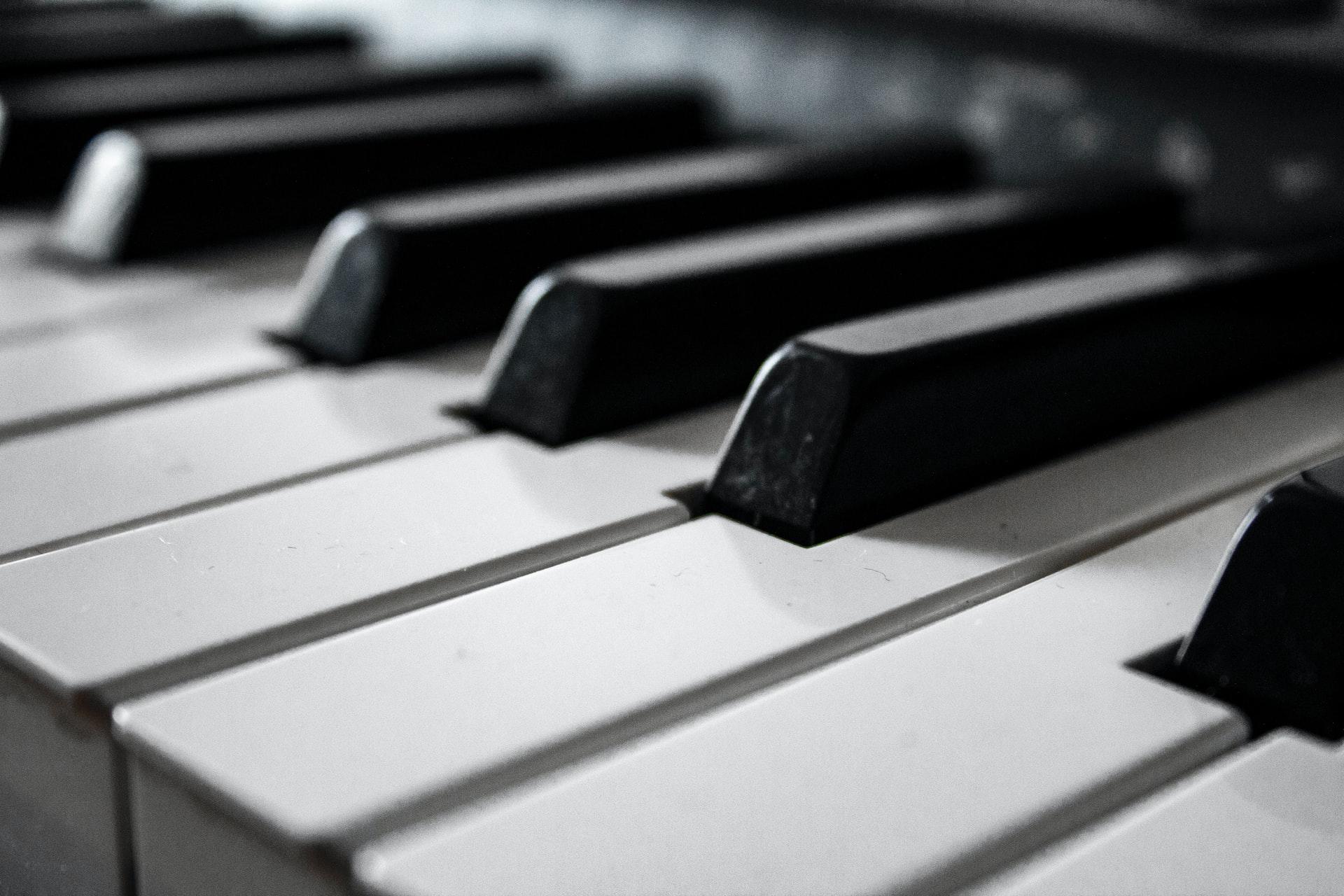The piano has an interesting history and goes through peaks and troughs in terms of popularity, especially when piano artists make it into the charts.
To work out whether the piano is still popular, or rather is it as popular as it once was, we'll need to look at where the piano originated, when it was at its most popular, times it's been popular in the past, and where it is now relative to its past.

The Advent of the Piano
The keyboard that acts as the interface between the pianist and the instrument has existed for way longer than the piano as they were used on pipe organs. Where the piano differs from an organ, however, is the way that it strikes strings to produce sound rather than with air passing through pipes.
The piano wasn't the first instrument to use keyboards and strings to make sound, though. Before the piano, there were instruments such as the clavichord and the harpsichord which struck or plucked the strings respectively. However, the clavichord, for example, didn't have a unique string for each key which meant that certain combinations of notes are not possible at the same time, a problem that the piano wouldn't face.
As the harpsichord plucks the strings, musicians have very little control over the instrument's volume. A complaint that would inspire the Italian musical instrument maker Bartolomeo Cristofori to invent the piano. Cristofori simply called the instrument a soft and loud keyboard and over time it became known as the pianoforte, the terms for "soft" and "loud" in Cristofori's native Italian. This would later be shortened again to piano, which just means "soft".
This volume control allowed for more expressive playing which led to the piano usurping the quiet clavichord, which was often used for composing and practising, and the harpsichord, whose players were only able to really get one volume from the instrument.
Developing the Piano and Making It Even More Popular
The initial piano in the early 18th century wasn't actually popular, but when it finally took off towards the end of the century and the great composers of the time such as Mozart were even using the piano to compose their most famous works.

You can spot pianos from this time due to the colour of their keyboards, which are the opposite way round to how they're made today; the black keys are white and the white keys are black.
With Europe's greatest composers all working using the piano, piano manufacturers were constantly looking to improve the instrument to suit them.
Some of the key developments made the piano bigger with more notes, more powerful with better construction and materials, and better action with more sensitive keys.
By the 19th century, pianos were being made even more powerful with cast iron frames, multiple strings per note to improve tone, and even different shapes and designs of piano, which would become less and less popular over time, leaving us with the upright and grand shapes that we recognise today.

The Piano's Early Popularity in Australia
While the piano's early history mostly took place in Europe, the first piano in Australia likely arrived towards the end of the 18th century, giving it over two centuries of history in the country. The surgeon George Worgan brought the piano aboard the First Fleet's HMS Sirius before gifting it to another settler Elizabeth Macarthur. For years, the pianos kept coming, despite the difficult journey they would face to make it to Australia.
Admittedly, they weren't arriving in huge numbers, but there were still pianos across the country, mostly in the hands of wealthy settlers commissioning their construction and delivery from British manufacturers. There are many tales of these early pianos and how they actually made it to Australia.
For some, getting to Australia was the easy part, getting across the country to their destination was never easy. Anybody who's ever moved a piano will know exactly how cumbersome they can be and these early musical immigrants weren't being transported in vehicles specifically fitted for them.
It just goes to show how popular the instrument was if people were willing to go to these lengths to get them.
Finding piano lessons in Australia now is quite simple: type down on your browser "piano lessons sydney," for example, followed by Superprof; you will access Superprof's platform and you'll have access to an array of piano tutors in your city.
The Popularity of the Piano Against Other Instruments
According to the Australian Music Association's Australian Attitudes to Music research from 2007, the upright piano and the acoustic guitar were pretty much level with slightly over 30% of musicians playing one of the other.

The electric guitar was about half that amount (though there was naturally some overlap with the acoustic guitar). This was a decline from the 2001 study which showed more people playing the piano, though this is thought to be due to digital pianos and keyboards.
Of course, for us, it doesn't matter whether it's a grand piano, upright piano, digital piano, or a keyboard, they were still rather popular around a decade ago.
The Popularity of the Piano Now
More recently, pianos had been showing a decrease in popularity, at least in terms of sales. In 2020, pianos weren't selling particularly well, but neither were guitars.
In the last two years, there's been an increase in the number of upright and grand pianos being sold, but the numbers for digital pianos have decreased, possibly due to the popularity of keyboards, which are usually cheaper.
The good thing is that the number of imported upright pianos has returned to pre-pandemic levels.
What Makes Playing the Piano Popular
While the piano has evolved over time, one thing that has changed relatively little is the keyboard. While the alternatively coloured versions existed for a while, the way a musician will play the piano by interacting with the keyboard has remained pretty much the same for almost 300 years.

Of course, pedals were added, the instrument was improved, and digital versions allow musicians to create many different sounds from the instrument, but the way it's played is probably one of the instrument's biggest appeals.
The Piano is Pretty Intuitive
When you look at a piano and see somebody playing it, you can quickly understand how it's played: you press one of the keys and it makes a note. The harder you press the key, the louder the note will be. The longer you leave the key pressed, the longer the note will sound. Getting started with a piano is very simple as you'll be making correct notes in seconds.
Other instruments aren't as immediately accessible. To make a sound on certain brass instruments, you need to master the technique. For string instruments, you need to get your fingering right and coordinate two hands, while possibly holding a bow, just to make a sound that probably will be awful.
Even the keys themselves are pretty obvious. The further to the right that you go, the higher the note produced. Just play a key to the left if you want a deeper note. Again, some of the other instruments out there aren't as obvious when it comes to playing notes of different pitches.
There Are Cheaper Alternatives Available
While not technically pianos, you can get cheap keyboards or digital pianos instead of buying an upright or grand piano for your home. To learn how to play the piano, these are great affordable options. Other instruments don't always have cheaper options available.

You can get started on a cheap keyboard, learn with free lessons, and progress onto a proper acoustic piano after a while, too, and all your practice won't go to waste. You may have to get used to the weight of the keys, but your technique should transfer over fairly easily.
Pianos Are Good for Different Genres
Pianos, keyboards, and synths are excellent for so many different styles of music. Naturally, the piano was developed around a lot of classical pieces and is still commonly used in orchestral music. Similarly, the piano is very popular in modern theatre and cinema so there are lots of pieces of music with classical leanings from contemporary culture, too.
Pianos have also played a part in contemporary genres like jazz, rock, pop, folk, and almost any genre you can think of. There are even piano parts in plenty of heavy metal music. As long as the instrument is popular with popular musicians, it'll be popular with people wanting to learn how to play a musical instrument.
Learning piano and finding piano tutoring today is simple and alternatives are several, from one-on-one lessons and group sessions to online piano lessons and more!
There Are Lots of Ways to Learn How to Play the Piano
The biggest reason that the piano stays popular is that there are plenty of reasons to learn it. For one, learning to play the piano is something taught at music schools around the world, in primary and secondary schools in Australia, by private tutors in Australia and around the world, and online.
Anybody who listens to music will have heard the piano in one of their favourite songs and anybody who has the slightest interest in playing the instrument will be able to find ways to get started and start playing their first melodies immediately.
So is the piano still popular?
Absolutely!
Find piano lessons online or near you when you search on Superprof!















